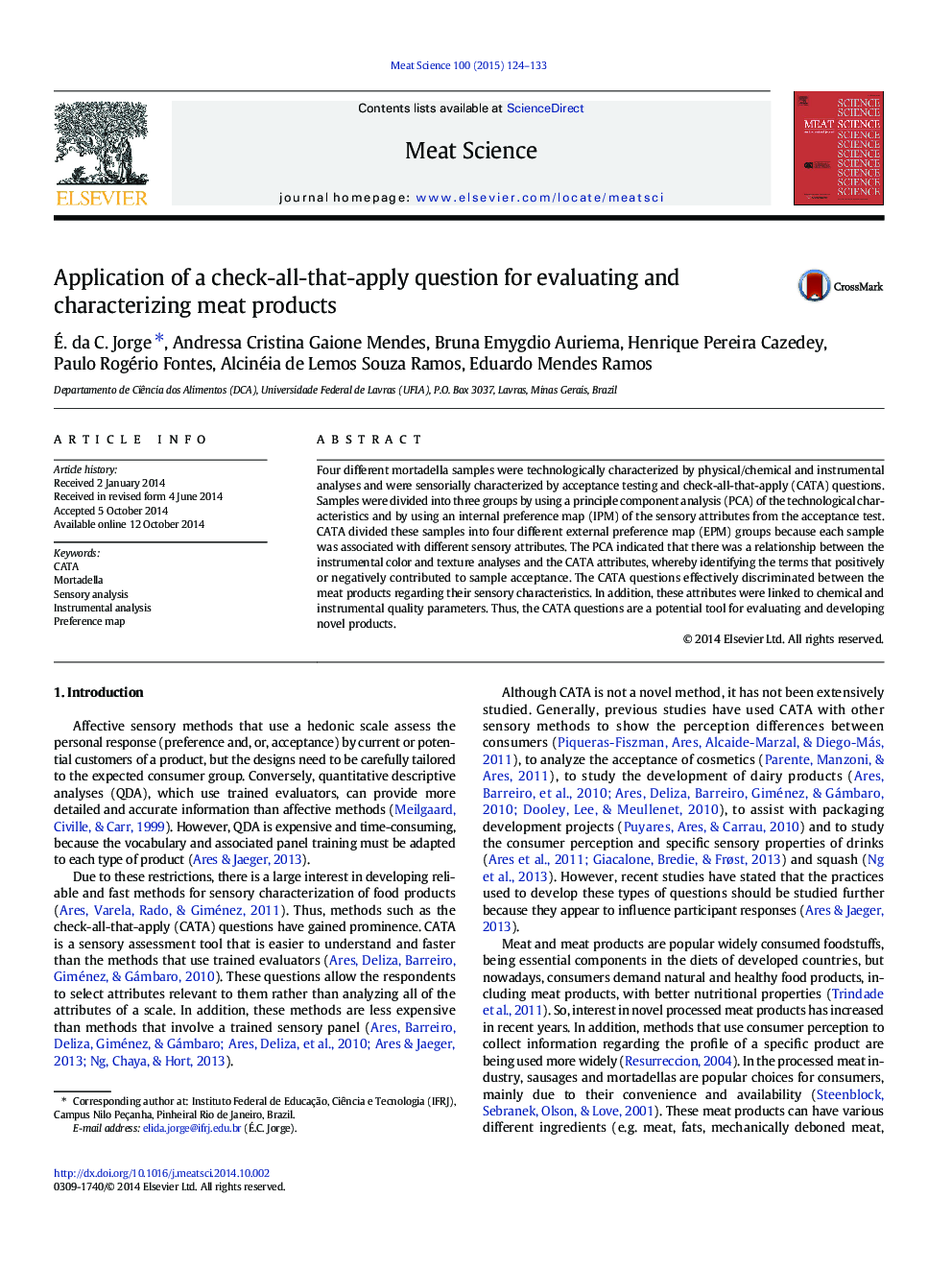| Article ID | Journal | Published Year | Pages | File Type |
|---|---|---|---|---|
| 5791276 | Meat Science | 2015 | 10 Pages |
Abstract
Four different mortadella samples were technologically characterized by physical/chemical and instrumental analyses and were sensorially characterized by acceptance testing and check-all-that-apply (CATA) questions. Samples were divided into three groups by using a principle component analysis (PCA) of the technological characteristics and by using an internal preference map (IPM) of the sensory attributes from the acceptance test. CATA divided these samples into four different external preference map (EPM) groups because each sample was associated with different sensory attributes. The PCA indicated that there was a relationship between the instrumental color and texture analyses and the CATA attributes, whereby identifying the terms that positively or negatively contributed to sample acceptance. The CATA questions effectively discriminated between the meat products regarding their sensory characteristics. In addition, these attributes were linked to chemical and instrumental quality parameters. Thus, the CATA questions are a potential tool for evaluating and developing novel products.
Related Topics
Life Sciences
Agricultural and Biological Sciences
Food Science
Authors
Ãlida da Conceição Jorge, Andressa Cristina Gaione Mendes, Bruna Emygdio Auriema, Henrique Pereira Cazedey, Paulo Rogério Fontes, Alcinéia de Lemos Souza Ramos, Eduardo Mendes Ramos,
